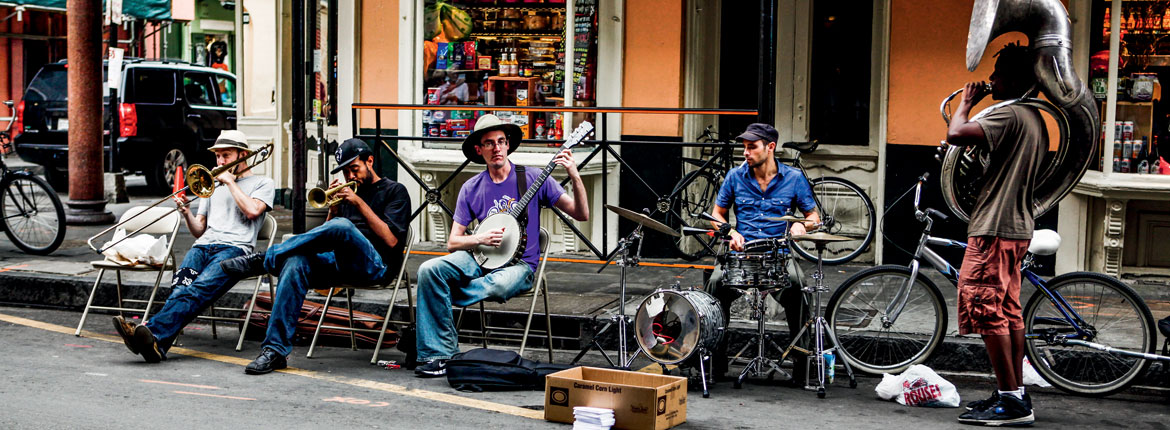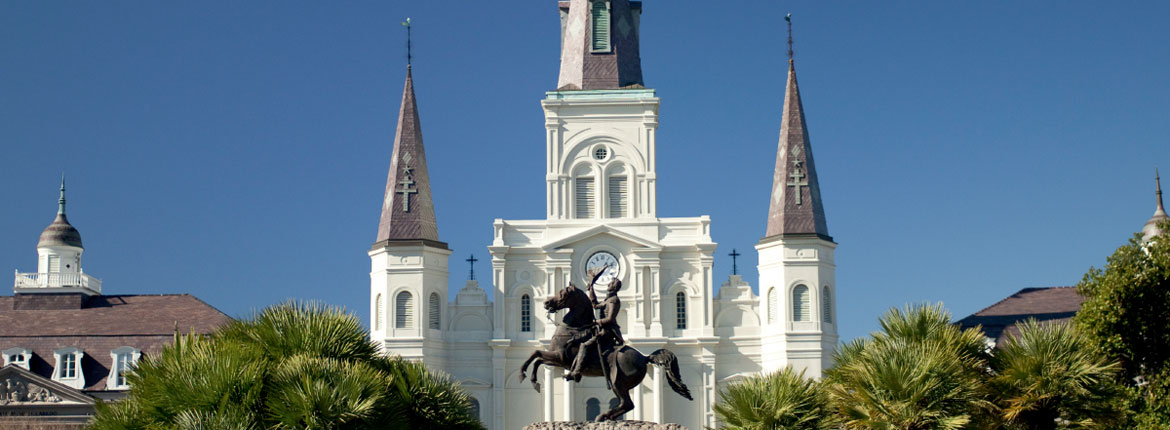On a humid September afternoon I landed at Louis Armstrong Airport.
Having visited the city affectionately known as ‘the Big Easy’ twice in the '90s, I wondered what I would find a few years after Hurricane Katrina submerged the city in a toxic tide. Across six days I explored New Orleans, getting a sense of its layout, character, flavour, its history and its future.
Staying in the Marriot on Canal St placed me at the heart of the city: Canal is the main street, to the east is the historic French Quarter, to the west the burgeoning Warehouse District and lush mansions of the Garden District. Due north leads to Treme, the proudly independent African American neighbourhood, and at the end of Canal is the mighty Mississippi River.
I explored all these neighbourhoods. The French Quarter contains a remarkable architectural beauty in its 18th and 19th century buildings with cast iron railings from which Spanish moss and other plants sway in the breeze.
It is also the heart of tourist New Orleans, so is filled both with superb restaurants and tourist tack. The legendary Bourbon St is now a kilometre-long stretch of loud bars, strip clubs, tacky T-shirt outlets and junk food vendors. It is aimed at stag and hen parties and by midnight is thick with drunken, messy tourists. Avoid.
Much more pleasant are the streets further south in the French Quarter: Royal, Chartres and Decatur. Café Du Monde on Decatur has been serving delicious coffee and beignets since 1862 and provides a great patio to watch the activities (street dancers, musicians, horse and buggy taxis) surrounding Jackson Square.
The French Quarter is filled with buskers from mid-morning to midnight. Many play traditional Dixieland jazz, but my favourites were the black brass bands who number up to 16 youths and swell across sidewalk and street as they blast their unique syncopated funk.
The Warehouse District is home to most of the city’s major museums as well as several new hotels, music venues and restaurants. A huge World War II museum and the nearby Ogden Museum of Southern Art are both worth visiting.
The Garden District is best seen from a streetcar and remains home to the city’s aristocracy and, yes, they still tend to live in mansions that could have been in Gone With The Wind.
Treme acts as an extreme contrast to the Garden District having been the neighbourhood where free black men were first allowed to buy property.
New Orleans natives are amongst the friendliest people I have ever met.
The boundary between Treme and the French Quarter is marked by Louis Armstrong Park and Congo Square; the latter being where slaves were allowed to gather on a Sunday and dance and sing, so planting the roots of the remarkable music that has grown from this city to conquer the world.
That said, both square and park are nondescript and Treme’s charm lies in its offbeat African culture museums and ‘shotgun shacks’: small, brightly-coloured wooden houses. These lend a Caribbean flavour to a city that is, in many ways, more the capital of the Caribbean than a US city: Catholicism, African religions (ie voodoo) and a laidback approach to life being characteristics of the Big Easy.
As the sun sets, music erupts across the city. A short walk past the French Quarter is Frenchman St where almost every building houses either an elegant club or a dive bar where jazz and blues and funk and rock bands play. The clubs tend to charge admission, but the dive bars are free with the bands playing for tips. And what bands!
Noted music bars like Tipitinas, The Hi-Ho Club and The Maple Leaf are all a taxi ride away and don’t think of skimping on the fare and enjoying a balmy evening walk to get there. New Orleans can be a violent city and naïve tourists occasionally become casualties.
Don’t let that put you off visiting. The central tourist areas are thoroughly policed and very safe: I walked from the Marriott around the Warehouse District and French Quarter at all hours of the day and night.
New Orleans natives are amongst the friendliest people I have ever met. Their drawling accent and local slang – “who dat?” is the city’s favourite expression – is as rich as this city’s remarkable music and Creole cuisine.
“Do you know what it means to miss New Orleans?” sang the city’s most famous son, Louis Armstrong. Today I can finally answer, “yes, I do know.”
Reported by Garth Cartwright for our AA Directions Autumn 2024 issue





